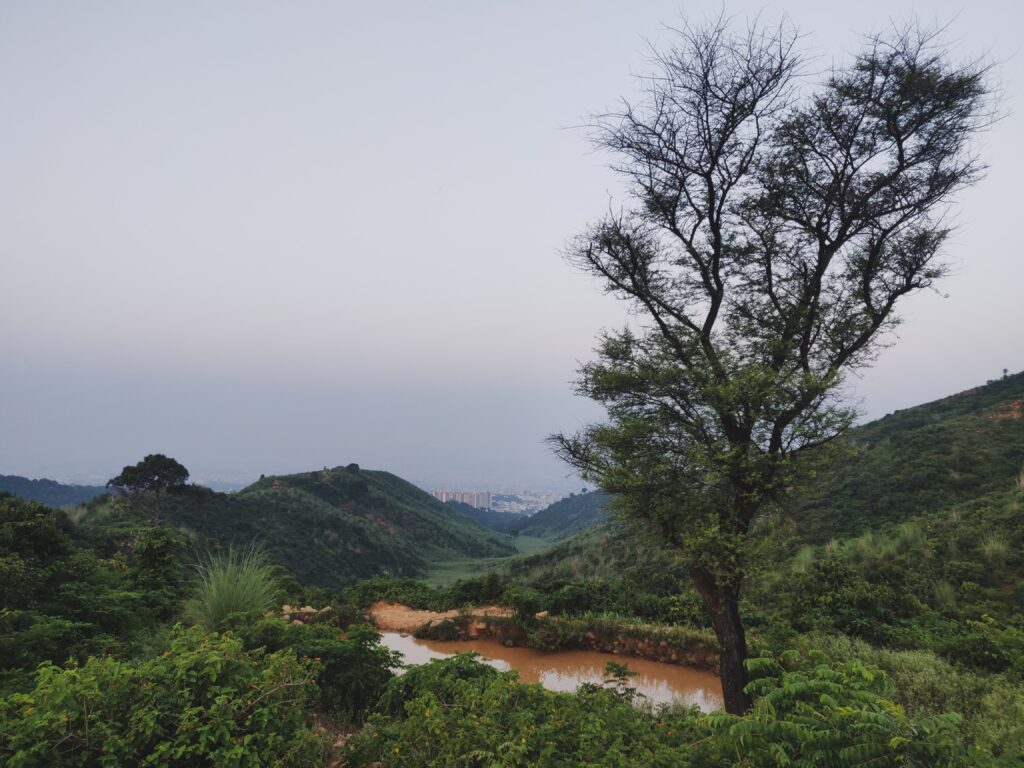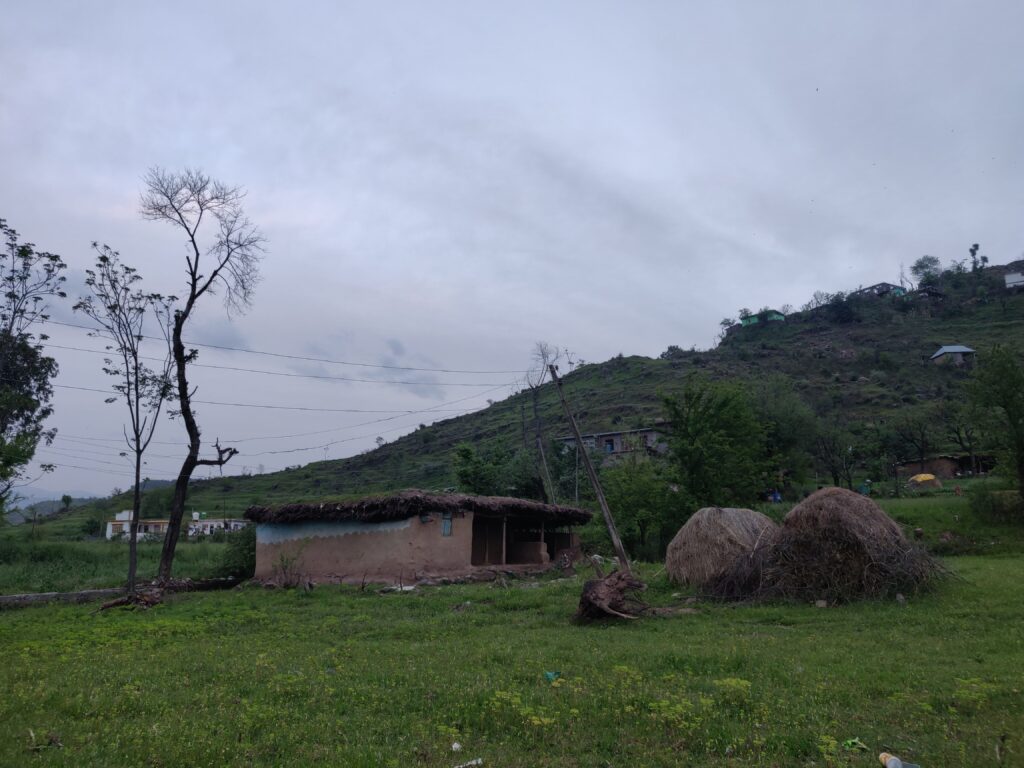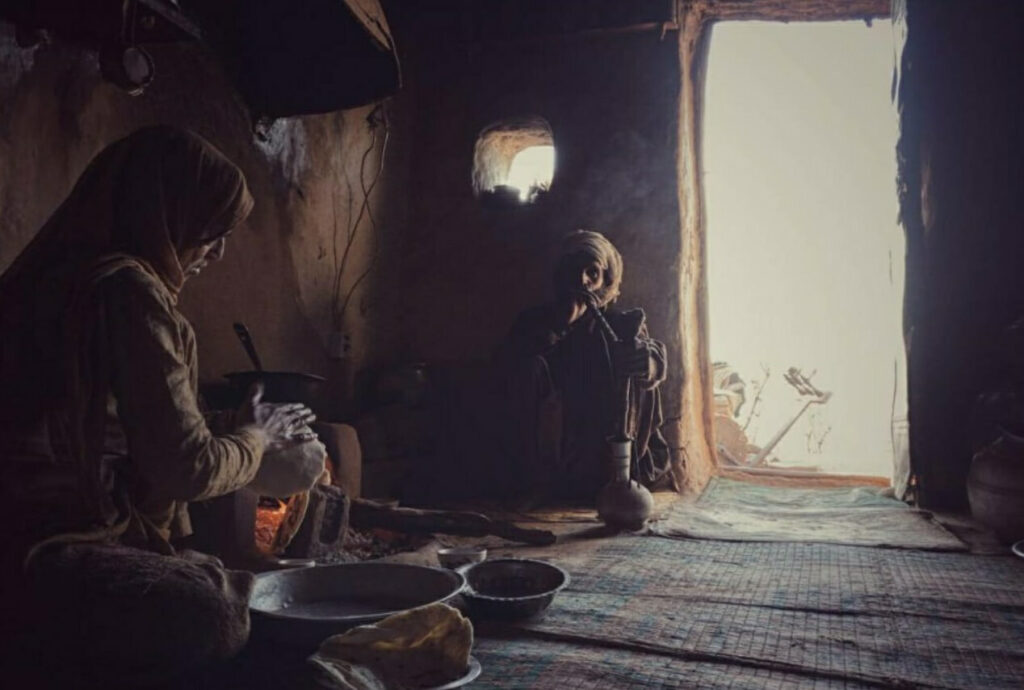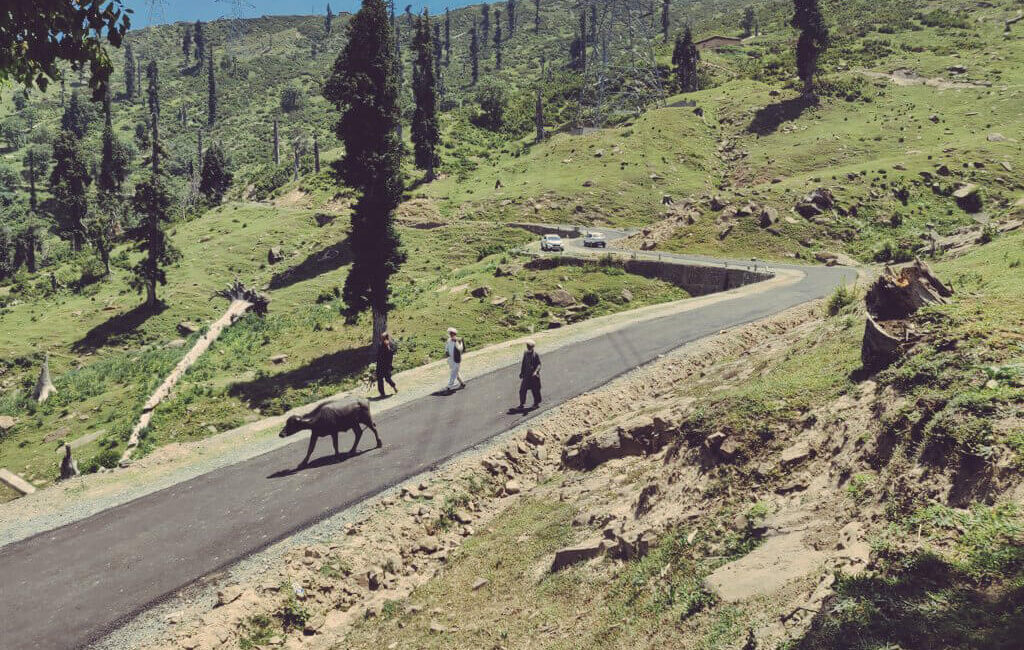This article is the third instalment of our series on how the COVID-19 pandemic and its associated lockdowns have impacted the livelihoods of three Indian transhumant pastoralist communities—the Van Gujjars, the Bakarwals, and the Raikas. Click here to read part one, a primer on pastoralism during the pandemic, and here for part two, on the Van-Gujjar community.
Ever since neo-liberalism was formally inducted into India’s economic vision in the 1990s, the state-society relationship has been continuously rearranged and reified, up to a point where a citizen is indistinguishable from their identity as a consumer. It is the protracted extension of such ideological arrangements that brought about Public-Private Partnership models in policymaking during the first decade of the 21st century. As subjects of an ever-encroaching nation-state, very few communities have been able to preserve components of their identity which stem from pre-market notions of production and social reproduction.
One community that defies this truism are the nomadic pastoralists of Jammu and Kashmir (J&K). Also known as the Gujjar-Bakarwal tribe, they form one of the largest transhumance communities in the Himalayas, undertaking biannual migration between the montane Himalayan pastures of Kashmir and Ladakh during summers, and the plains and Peer-Panjal ranges of the Jammu region during the winters. This biannual migration is integral to the social and cultural identity of the tribe; its value stems from the Islamic notion of Sunnah associated with ‘Khanabadoshi’, or ‘nomadism’. The cyclical migration process is the twin tribe’s primary mode of livelihood, ensuring that their flock has access to pastures all year round.
The Gujjar-Bakarwal community’s expansive intergenerational knowledge of the ecosystems they traverse has historically rubbed off on the non-tribal communities with whom they interact in rural and urban agglomerations.

Across mountains and plains, their daily activities help conserve local soil and water, prevent forest fires, rejuvenate wild flora and fauna, fertilise agrarian lands, and increase farm output. The existence of transhumance processes within the community and their continuation is vital for both human and non-human dwellers of the regions they cover.
It is safe to say that the cultural notions of the Gujjar-Bakarwal community make them veritable guardians of the Himalayas’ ecology. However, their traditional migration routes have been significantly impeded by the forces of climate change, urbanisation, and militarisation in Jammu and Kashmir. In managing the COVID-19 crisis, the Indian state’s usage of a ‘PPP’ Model — not just in its popular economic form, but as a confluence of Politics, Privatisation and the Pandemic — has only further reduced the range of nomadism that the Gujjar-Bakarwal tribes can undertake.
Since the pandemic began, there has been an exponential increase in the number of administrative and social limits placed on the community’s mobility, so much so that the socio-economic consequences have been irreversible for many members. The tribe’s mode of transhumance production faces even greater volatility due to the social impediments of Islamophobia and ethnonationalism.
Seeking Private Rights from the Periphery
These nomadic tribes have historically been resigned to the margins, unable to fit into norms of private property that have been incorporated into contemporary citizenship and state policy. Due to their communitarian ideals of ownership, the Gujjar-Bakarwals were slow to claim private property, and are still yet to be given dwelling and livelihood rights. While contemporary state-service delivery relies on identification markers and technology that is premised upon private ownership and a sedentary existence, this nomadic community continues to be denied much-needed welfare schemes like PDS and MGNREGS. It was only in the early 1990s that the administration accorded Gujjars and Bakarwals Scheduled Status with affirmative action in the field of education and livelihood. Policy apathy towards mobile communes has limited the benefits of these policies to those who could establish private ownership. It demanded sedentism, thereby disincentivizing the preservation, upkeep, and evolution of traditional nomadic practices that resist the challenges of a market economy.
The state’s response to local armed resistance and cross-border conflict has also severely restrained the access of these nomadic pastoralists to their traditional summer pastures, such as Gurez and Kargil in the Zanskar range; impenetrable man-made borders- such as the Line of Control have been erected. When armed resistance broke out in Kashmir during the 1990s, it increased the vulnerabilities of the Gujjar-Bakarwal community members, with reports of nomads being exploited and targeted by state and non-state actors emerging as recently as 2020. Moreover, the extensive occupation and enclosure of pastoral highlands as ‘strategic zones’ by Indian security agencies leaves them out of bounds for civilians, leading to the destruction and shrinkage of pastures. In turn, this results in overgrazing and depletion of those that are currently available to the nomads.

The colonial nature of forest & wildlife conservation laws have a legacy of treating the Gujjar-Bakarwal tribes as ‘encroachers’, instead of integral components of the ecosystem. Such state action goes hand in hand with the denial of livelihood and dwelling rights demanded by the community, as is envisioned under the Forest Rights Act. Contrary to the central government’s claims of emancipating nomadic tribes of J&K with the abrogation of Article 370, one has only witnessed increased marginalisation and disenfranchisement of these pastoralists. Instead of preserving traditional claims over local resources, the enforcement of new domicile rules in the region by the government allows for claims over resources (such as immovable property, private property, access to employment) to be made by non-natives, even as other Himalayan states uphold laws that protect native claims over local resources.
Also Read: Mapping the Impact of COVID-19 on Himalayan Pastoralists: A Primer
Although the FRA was extended to J&K in 2019, the local government has only delayed its implementation while focusing instead on using the Forest Department to evict nomadic tribes from their forest dwellings, while disregarding the Supreme Court Order of 2019 which halted evictions until all claims are settled. The intent of the local administration in criminalising the tribe is seen in how the Forest Department has been placed as the nodal agency for implementing the FRA, instead of the Tribal Department, as is the norm in other states. The region has been opened up to unchecked extraction of natural resources by corporations, especially in ecologically sensitive zones without proper clearances. The local government has been handing out ‘pre-embedded clearances’ for mineral extraction in the Jhelum’s river bed which flout democratic principles of local governance of resource management. These poorly-monitored mining blocks have been sanctioned in regions with high tribal populations such as Anantnag and Kulgam. It can have severe ecological concerns not just for the nomads but all communities which are dependent on the Jhelum for their survival.
The delayed implementation of the FRA, the transformation of the Jammu and Kashmir Forest Corporation into a ‘for-profit’ company, and the proposed dilution of environmental safeguards via the draft Environment Impact Assessment 2020, all point to the imminent displacement of native tribes from local land, water, forest and mineral resources in lieu of capitalist exploitation by large MNCs.
Practising Nomadism in Kashmir During the Pandemic
Since March 2020, the Indian government’s knee-jerk responses to the pandemic have constantly caught the Gujjar-Bakarwal community unawares, leaving them stranded without recourse and access to government assistance. In 2020, the community was left to fend for themselves in the Jammu region, with their migration delayed late into the summers due to the lockdown. The financial distress that followed saw distress sales of their flock at rock-bottom rates. The Gujjar-Bakarwal communities faced stigmatisation as “bearers of the coronavirus”. Rife Islamophobia ostracized the community from the dairy markets of Jammu. Tribes have been attacked by “cow vigilantes” on their journey back to the mountains over false claims of cattle smuggling; the elderly and children are chosen as soft targets, with the purpose of intimidating the community from practising their livelihood and settling in non-Muslim dominated zones.
The community returned back to their summer highland after bearing severe losses, with the hope of returning the following year to recuperate. However, 2021 drove the community further into penury and away from their traditional work practices. Instead of helping nomadic communities to implement the principles of the FRA and allowing local governance bodies to present their claims, the J&K forest administration has been sending eviction notices during the winter to their traditional dwelling zones in the summer highlands, in the midst of a pandemic, with a very short response time. The local administration has even tried evicting forest-dwellers without notices, with Gujjar-Bakarwal community members being attacked and wounded during the drive.
Several members of the Bakarwal community, living on the periphery of Jammu, are choosing not to migrate back to the highlands this year. Conversations with them found the loss of flock over the past year to be the primary reason, with members having shifted to informal daily-wage construction work to subsist.
The long-drawn impact of such decisions would be members’ exclusion from government processes wherein the forest rights of communities are recognised. Although those members who chose to migrate to their summer abodes in 2021 did so with limited flock and via road before the lockdown was announced mid-April, they faced restrictions on their movement. Vital routes such as the Mughal Road were closed for an extended period into the summer due to “landslides in the upper reaches”, and “inclement weather”.

Living separate from urban dwellings, Bakarwal communities do not have access to public health infrastructure or food distribution systems, and are susceptible to the digital divide in the disbursal of information and resources to battle the pandemic. Such “technocratic inegalitarianism” (Afreen 2020) is laid bare in the Indian government’s policy for inoculation against COVID-19, wherein residents have to access platforms via the internet to get the vaccine. Without mobile internet and smartphones in the mountains, a majority of these nomadic members remain invisibilized by India’s inoculation program. Their condition is made worse by an administrative gag on transparent COVID-19 reportage and government orders limiting the capacity of NGOs to provide medical resources to distressed members in regions where public health infrastructure remains absent.
The pandemic has also dealt a huge blow to the children of the Gujjar-Bakarwal tribes. The shift to online education has hardly considered their contexts of low digital literacy, unaffordable smart devices, and lack of internet access. Midday meals went amiss, affecting their nutritional requirements. The potential of mobile schools has been ignored amidst the privatisation and digitalisation of education. In effect, the pastoral children are being denied the Right to Education.
A confluence of State, market, and social factors have made the practice of transhumance increasingly unviable and unsafe for the Bakarwal tribal community, forcing them to find alternate and spatially immobile livelihoods, without commensurate protection against exploitation. At this rate, the future of Nomadism in the region seems to be mutating from cohabitation with nature to confinement in urban jungles. The ‘Khanabadoshi’ identities of the Gujjar-Bakarwal are at risk of being subsumed into ‘Dehari’ labourers trying to eke a living in urban areas.
Shepherding A Policy Change
The need of the hour is a pandemic policy that is sensitive to the temporal and spatial requirements of the nomadic Gujjar-Bakarwal community. Members need to be included in administrative decision-making, with healthcare facilities be made more accessible, and vaccination being independent of digital registration and identification. The government should integrate NGOs and local volunteers in their response protocol to allow for greater reach into the tribal regions of Jammu and Kashmir.
Cash transfers, ration packets, and medical kits should be provided to these nomadic communities, to ensure their safe migration. The J&K administration should set up subsidised transport facilities across nodal inter-district roads which are used by the Bakarwals during their migration to allow them to quickly and safely be translocated following COVID-19 safety protocol. Inclusive education policy must reflect upon access, lived realities, safe spaces, and nutritional needs under the Sarva Shiksha Abhiyan.
As world governments push to implement SDGs, the nomadic pastoralists of J&K should be given a seat at the table, seeing as to how an organic lifestyle and symbiotic ecological existence is inherent to their being. A just socio-economic tribal policy can only be created with fair political representation of the community. At the UN High-Level Dialogue on Desertification, Land Degradation and Drought on June 14, the Indian Prime Minister used the example of the Banni grasslands in the Rann of Kutch, wherein degraded land was restored to support pastoral activities and animal husbandry. “In the same spirit, we need to devise effective strategies for land restoration while promoting indigenous techniques”, he stressed; all the while, in the background, indigenous Gujjar-Bakarwal communities continue to be evicted from their native pasture lands.
Featured image of a trio of Gujjars heading home after rescuing a lost buffalo in their summer abode at Nathatop in Ramban District, courtesy Afreen Faridi.







This has a lot of great information here. I need to look more in to this myself. I’m so glad that you share this with us.